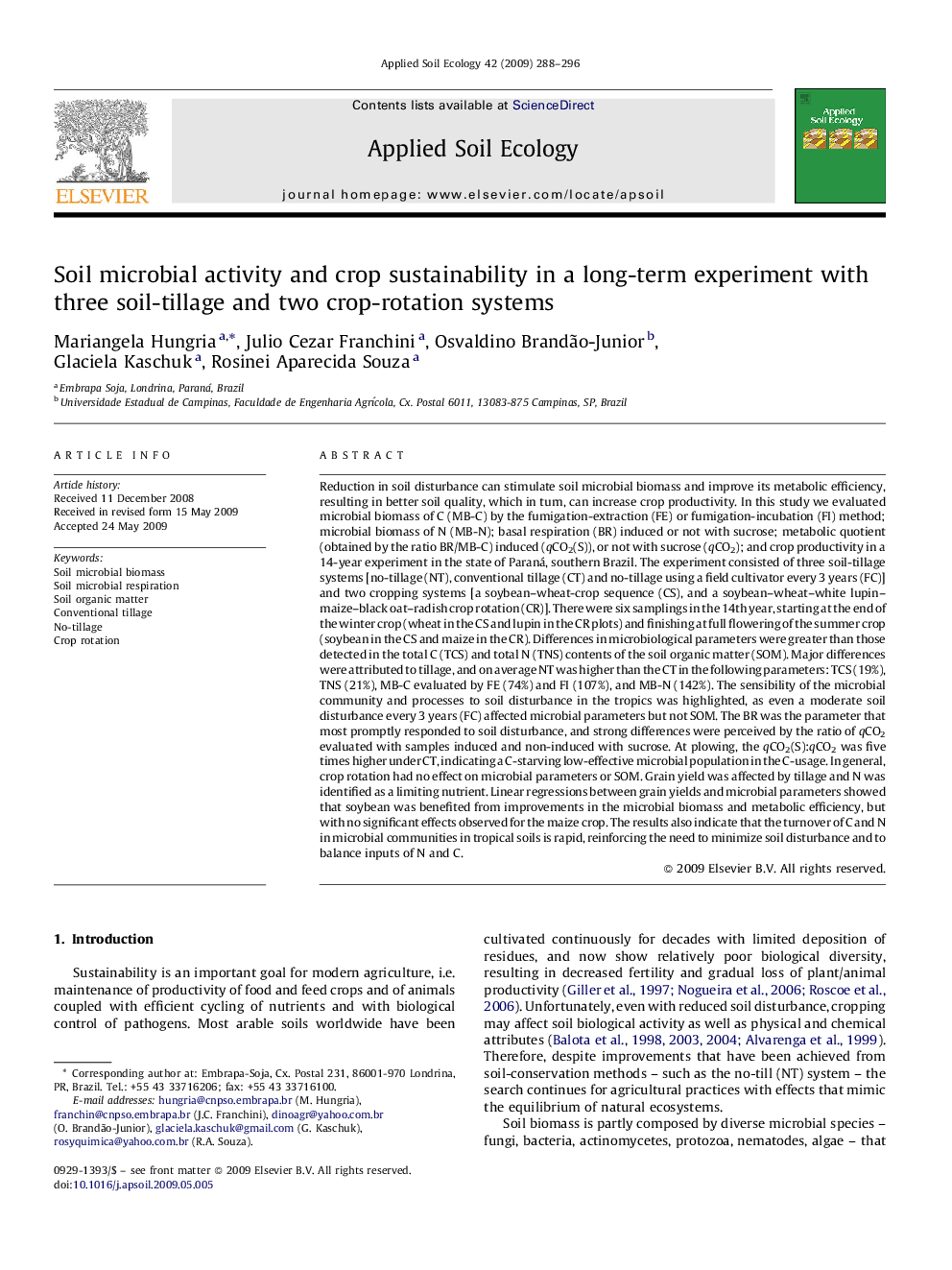| کد مقاله | کد نشریه | سال انتشار | مقاله انگلیسی | نسخه تمام متن |
|---|---|---|---|---|
| 4382877 | 1304236 | 2009 | 9 صفحه PDF | دانلود رایگان |

Reduction in soil disturbance can stimulate soil microbial biomass and improve its metabolic efficiency, resulting in better soil quality, which in turn, can increase crop productivity. In this study we evaluated microbial biomass of C (MB-C) by the fumigation-extraction (FE) or fumigation-incubation (FI) method; microbial biomass of N (MB-N); basal respiration (BR) induced or not with sucrose; metabolic quotient (obtained by the ratio BR/MB-C) induced (qCO2(S)), or not with sucrose (qCO2); and crop productivity in a 14-year experiment in the state of Paraná, southern Brazil. The experiment consisted of three soil-tillage systems [no-tillage (NT), conventional tillage (CT) and no-tillage using a field cultivator every 3 years (FC)] and two cropping systems [a soybean–wheat-crop sequence (CS), and a soybean–wheat–white lupin–maize–black oat–radish crop rotation (CR)]. There were six samplings in the 14th year, starting at the end of the winter crop (wheat in the CS and lupin in the CR plots) and finishing at full flowering of the summer crop (soybean in the CS and maize in the CR). Differences in microbiological parameters were greater than those detected in the total C (TCS) and total N (TNS) contents of the soil organic matter (SOM). Major differences were attributed to tillage, and on average NT was higher than the CT in the following parameters: TCS (19%), TNS (21%), MB-C evaluated by FE (74%) and FI (107%), and MB-N (142%). The sensibility of the microbial community and processes to soil disturbance in the tropics was highlighted, as even a moderate soil disturbance every 3 years (FC) affected microbial parameters but not SOM. The BR was the parameter that most promptly responded to soil disturbance, and strong differences were perceived by the ratio of qCO2 evaluated with samples induced and non-induced with sucrose. At plowing, the qCO2(S):qCO2 was five times higher under CT, indicating a C-starving low-effective microbial population in the C-usage. In general, crop rotation had no effect on microbial parameters or SOM. Grain yield was affected by tillage and N was identified as a limiting nutrient. Linear regressions between grain yields and microbial parameters showed that soybean was benefited from improvements in the microbial biomass and metabolic efficiency, but with no significant effects observed for the maize crop. The results also indicate that the turnover of C and N in microbial communities in tropical soils is rapid, reinforcing the need to minimize soil disturbance and to balance inputs of N and C.
Journal: Applied Soil Ecology - Volume 42, Issue 3, July 2009, Pages 288–296